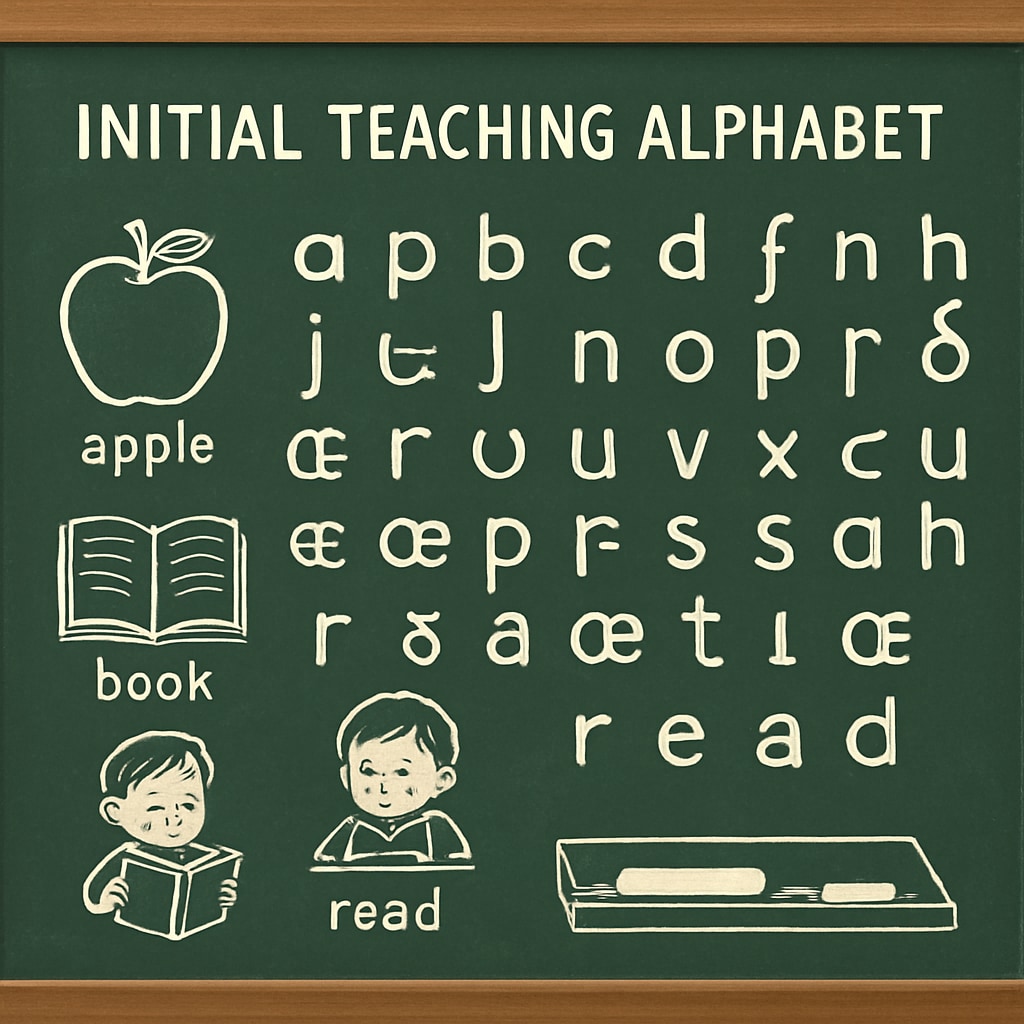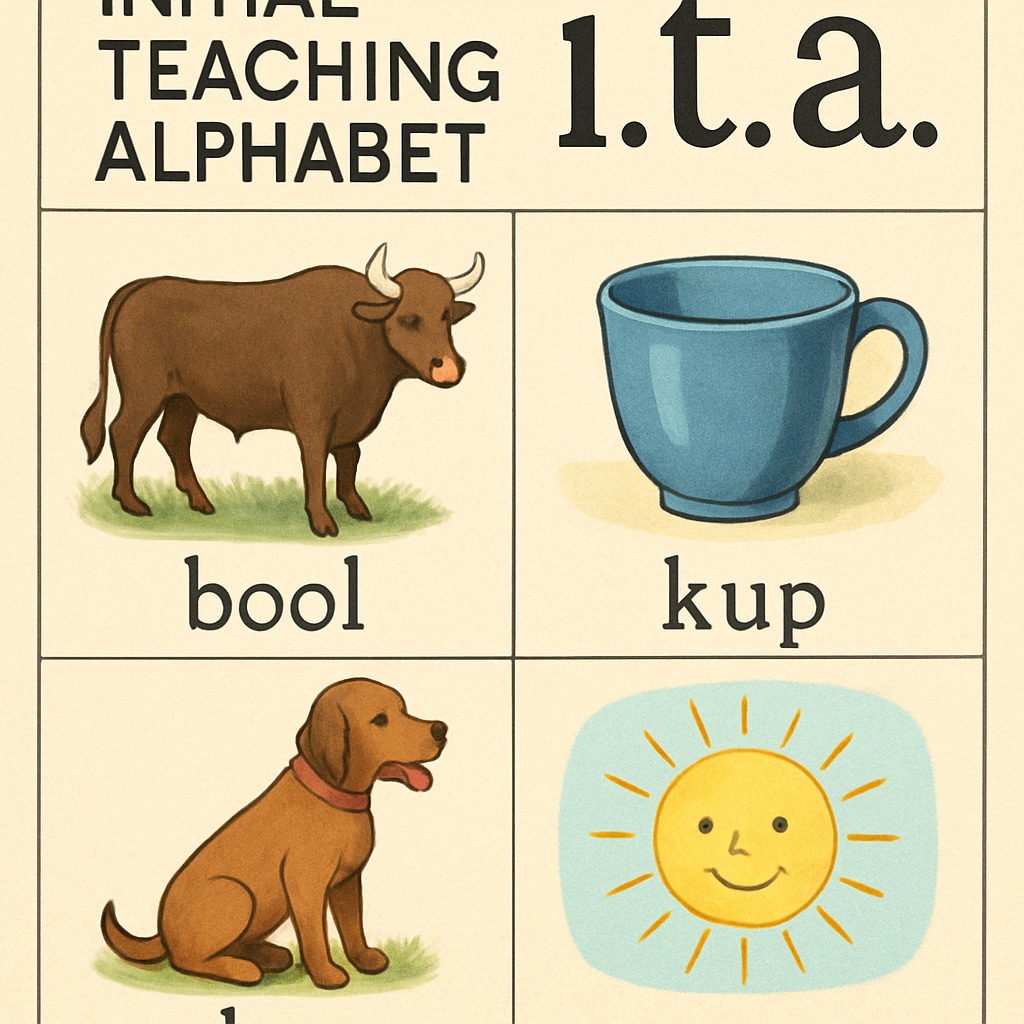The Initial Teaching Alphabet (ITA), a phonetic alphabet designed to simplify early reading instruction, was introduced in the mid-20th century as an innovative teaching method. While ITA was celebrated for helping beginners quickly grasp reading skills, its long-term effects on spelling proficiency have raised questions. This article examines the impact of ITA on spelling development, exploring whether it inadvertently creates obstacles for learners in mastering traditional English spelling.
What Is the Initial Teaching Alphabet (ITA)?
The Initial Teaching Alphabet was developed in the 1950s by Sir James Pitman, a British educator. ITA used 44 symbols representing phonemes (the sounds of spoken English) to simplify the complex relationship between English spelling and pronunciation. The intent was to reduce the cognitive load on young readers by aligning written symbols with spoken sounds directly. For example, the ITA substituted the letter c with k to ensure phonetic consistency.
While ITA was widely adopted in classrooms during its early years, its use was intended as a transitional tool, gradually leading students to standard English orthography. However, this transition was not always seamless, and some learners faced challenges in adapting to conventional spelling rules.

How ITA Impacts Spelling Proficiency
One of the main criticisms of the ITA is its potential to disrupt the development of standard English spelling skills. Because ITA prioritizes phonetic consistency, students accustomed to this system may struggle when transitioning to the irregularities of traditional English spelling. For instance, English words like knight and through, which contain silent letters and inconsistent phonemes, can be particularly challenging for ITA-trained learners.
Research on ITA’s long-term effects has identified the following concerns:
- Over-reliance on phonetics: Learners may rely too heavily on phonetic rules, leading to persistent spelling errors, such as writing sed instead of said.
- Delayed mastery of standard spelling: The transition from ITA to traditional English orthography may take longer for some students, particularly those with learning differences like dyslexia.
- Confusion in advanced language skills: The discrepancies between ITA symbols and standard letters can create cognitive dissonance, making it harder to internalize spelling conventions.
As a result, educators and researchers have debated whether ITA’s initial benefits outweigh its potential drawbacks in spelling development.
Benefits of ITA in Early Education
Despite the criticisms, ITA was not without merit. It offered several advantages for young learners, particularly in the early stages of literacy. For example:
- It reduced frustration for new readers by aligning written symbols directly with spoken sounds.
- ITA encouraged confidence in reading, as students could decode words more intuitively.
- It provided a stepping stone for children who struggled with the complexities of English orthography.
These benefits were particularly significant for students with language processing difficulties, as ITA simplified the often overwhelming task of decoding written language. However, these short-term gains must be weighed against the potential long-term challenges.

Balancing Innovation and Tradition in Teaching Methods
The debate surrounding ITA highlights a broader question about educational methods: how can we balance innovative teaching tools with the need to prepare learners for real-world applications? While ITA simplified reading for beginners, its reliance on phonetic consistency created a disconnect between early learning and the irregularities of English spelling. Therefore, educators must carefully consider the trade-offs of such methods before implementing them in the classroom.
For modern educators, the key lies in blending approaches. For instance, phonics-based systems, which emphasize the relationship between sounds and letters, can be integrated with exposure to standard orthography from an early stage. This dual focus may help students develop both reading fluency and spelling accuracy.
Conclusion: A Lesson from ITA
While the Initial Teaching Alphabet was a bold experiment in literacy education, its unintended consequences on spelling proficiency serve as a cautionary tale. By prioritizing phonetic simplicity, ITA inadvertently complicated the transition to traditional English spelling for many learners. Today’s educators can learn from ITA’s successes and shortcomings, striving to adopt methods that support both early literacy and long-term language mastery.
In the evolving landscape of education, it’s essential to critically evaluate teaching methods, ensuring they equip students with the skills they need for lifelong learning. As a result, ITA remains both a fascinating chapter in the history of education and a reminder of the complexities inherent in teaching English literacy.
Readability guidance: This article uses short paragraphs for clarity, includes lists to structure key points, and balances academic detail with accessibility for a general audience.


